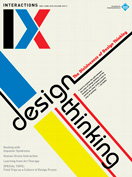Authors:
HyunJoo Oh, Mark Gross, Michael Eisenberg, Sherry Hsi
Describe what you made.
PaperMech (aka FoldMecha) is a design system for exploring mechanical papercraft. It enables beginners to design simple mechanical movements by modifying parameters. They then download the parts to build the mechanisms and adapt them into their creations. Our website (www.papermech.net) provides assembly instructions and a gallery of user-contributed expressive paper machines.
 |
The first step in the design process: selecting a starting motion or mechanism (http://www.papermech.net/create). |
Briefly describe the process of how this was made.
The website Five-Hundred and Seven Mechanical Movements (http://507movements.com/) presents a collection of mechanical movements that a designer can employ to create diverse mechanical devices. Based on this, we envisioned a design simulator to support mechanical-movement design.
Over four years, we built three versions. Our first version supported only linkage-based paper toys (see "FoldMecha: Design for Linkage-Based Paper Toys" from UIST'15). In the second, we added more movement modules and broadened the simulator to support several mechanical movements. We extended the range of parameters for individual movements, but still supported only three movement modules (see "FoldMecha: Exploratory Design and Engineering of Mechanical Papercraft" from TEI'17).
Our third version provides 12 movements and is accessible on the Web. We suggest that users follow these steps:
- On the PaperMech website, go to the Design tab and select a motion you want to start with.
- On the simulation page, modify the motion by changing local parameters to develop your design.
- When you finish, download your design as a PDF file. Cut the parts with a laser cutter and print the folding net with a desktop printer.
- Assemble the parts following the video instructions.
- Adapt the completed movement construction into your ideas. See what other designers have done: Visit the Explore tab to see the gallery.
 |
If you select the open-close motion, you'll see this interactive simulation. You can change the mechanism type and customize linkage lengths, gear size, and so on. |
What for you is the most important/interesting thing about what you made?
With PaperMech, beginner designers can engineer diverse kinetic creations. They design with interactive simulations, then build the physical device using paper (cardboard, mat board, copy paper, etc.) as the main material. This helps them to understand mechanical movements and encourages them to think about what the movement can be like.
From 2014 to 2017, we studied PaperMech's usability in five workshops with 75 participants. This guided our iterative prototyping as we studied the potential of building expressive paper machines as a creative learning medium. Many participants presented rich, highly personalized creations.
 |
A variety of expressive paper machines, all made by teenagers at the Boulder Public Library workshop in July 2017. |
What was the biggest surprise in making this?
We discovered the importance of accessible materials. To support exploratory construction, encouraging people to experiment was critical. From workshops, we learned that using recycled materials sustains a playful environment where people feel free to experiment with ideas and are unafraid to fail. People explored more actively with recycled, rather than new cardboard.
 |
Tools and materials used for assembling the open-close motion with a rack and pinion mechanism. |
What is the one thing about making this that you would like to share with other makers? Some beginner designers hesitated when they encountered unfamiliar technical language such as rack and pinion gears or linkage. So we changed PaperMech to start with plain descriptions of motion such as up-down, open-close, and flapping. Now on the front page users begin by choosing either a motion or a mechanism. This tiny tweak made our system more beginner friendly.
 |
Video tutorial page for the open-close motion with a rack and pinion mechanism. (More at http://www.papermech.net/learn) |
 |
Finished open-close motion with rack and pinion mechanism using a 180-degree servo motor. |
HyunJoo Oh, University of Colorado Boulder, [email protected]
Mark D. Gross, University of Colorado Boulder, [email protected]
Michael Eisenberg, University of Colorado Boulder, [email protected]
Sherry Hsi, Concord Consortium, [email protected]
Copyright held by authors
The Digital Library is published by the Association for Computing Machinery. Copyright © 2018 ACM, Inc.








Post Comment
No Comments Found